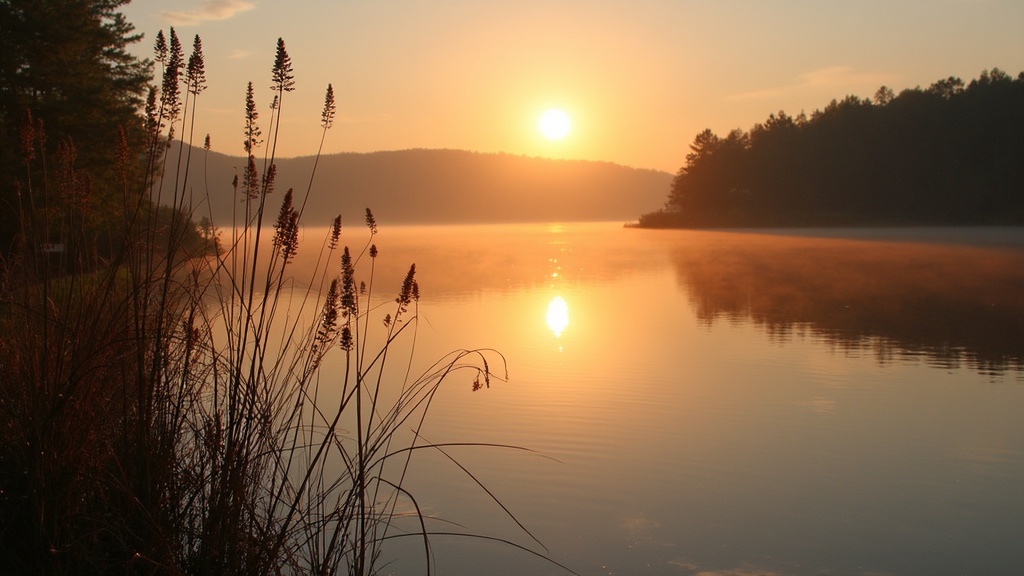Conserving native fish species at Lake Webster is a topic that’s genuinely close to my heart. As someone who’s wandered those shorelines a dozen times, I can say there’s something special about spotting a shimmering perch or catching a glimpse of a muskellunge lurking just beneath the water. Keeping these native fish around isn’t only about preserving local flavor. It connects people to a living landscape, ties families to cherished hobbies, and helps local ecosystems stay in balance.

Why Native Fish at Lake Webster Matter
Everyone has their own reasons for caring about fish in a lake. For me, seeing native fish thrive is about more than good fishing stories; it’s about what those species say about the health of the whole place. Native fish like bluegill, largemouth bass, and various darters have shaped Lake Webster’s ecosystem for ages. They fill unique niches, keeping certain bugs in check, serving as meals for bigger wildlife, and also helping cycle nutrients.
Native fish aren’t as showy as some introduced species, but trust me: they’re vital links in a chain that stretches through frogs, herons, turtles, and right back to people. They help keep algae under control, support sport fishing economies, and preserve a sense of homegrown identity for Webster’s anglers. Their presence is a signal that the water quality and habitats are hanging in there. Without them, the natural balance of the lake could quickly unravel, affecting even simple lakeside experiences like swimming or boating.
Understanding the Threats to Native Fish
Some folks might wonder why native fish even need protection. After all, lakes look peaceful on the surface. In reality, things get tricky beneath the waves. The main threats can be grouped into a few categories:
- Invasive Species: Carp, zebra mussels, and overpopulated crappie crowd out native fish, changing food availability and shrinking safe habitats for local fish.
- Pollution and Runoff: Chemicals and nutrients running off lawns, farms, and roads can fuel algae blooms, making it tough for fish eggs and young fish to survive.
- Habitat Loss: Docks, seawalls, and removal of native plants strip away hiding places and nesting grounds for local fish. Even a little shoreline development adds up quickly.
- Overfishing: Taking too many big breeding fish can set a fish population back for years. Regulations help, but not everyone sticks to them.
I remember talking to a neighbor who’d been fishing Webster for decades. He mentioned, “It’s not like it was in the seventies.” Maybe it never is, but it made me aware of just how much these pressures quietly build up over time. Many people new to the area don’t spot the changes happening year by year, but old-timers sure notice.
How Conservation Efforts Are Making a Difference
It seems lately that things are getting better, at least around Webster. Several local actions have picked up steam. Some are obvious, like posted signs about limits on bass or panfish during certain months. Others are less visible, such as aquatic plant restoration or projects to add fishfriendly structures along the lake bottom.
Here’s a look at some conservation approaches getting traction at Lake Webster:
- Habitat Restoration: Adding logs, rocks, or artificial reefs in certain spots lets young fish hide, grow, and dodge predators. I’ve seen volunteers plant native water lilies along the shore, creating new habitats for fish and frogs to thrive.
- Stocking With Thought: Stocking programs now aim to help, not overrun, the ecosystem. Hatchery-raised muskellunge, for example, are introduced in just the right numbers, using detailed habitat surveys as a guide.
- Water Quality Monitoring: Local conservation groups like The Webster Lake Preservation Society keep tabs on runoff, test nutrient loads, and help fund wetland buffer zones. Little by little, this work cuts down on pollution getting to the lake.
- Fishing Regulations and Education: Signs and pamphlets keep anglers in the know about size limits and fishing seasons. I always appreciate having these handy, because it helps keep me and others up to speed on rules and the reasons behind them.
Volunteer efforts also make a real difference. Community clean-ups, lakeshore plantings, and even citizen scientists taking water samples all play a part. These actions may seem small, but they add up. Plus, the more people who pitch in, the more momentum grows for future projects to support Lake Webster’s unique fish.
Getting Started With Protecting Lake Webster’s Native Fish
When folks ask where they should start, I like to say you don’t have to be an expert or make a huge commitment. Small, positive choices can create real benefits for Lake Webster’s aquatic life.
- Stick to Fishing Limits: It’s tempting to take home a cooler full of bluegill, but sticking to posted limits keeps populations healthy and helps sustain good fishing for everyone. Letting the biggest breeders go makes a big difference for future generations of fish.
- Go Native at the Shoreline: Plant native grasses, shrubs, and lake-edge vegetation. These not only add beauty and erosion control, but also offer shelter and breeding spots for fish. Keeping part of the shoreline wild is a win for wildlife.
- Be Careful with Chemicals: Switching to fish-safe fertilizers, using fewer herbicides, or skipping pesticides for yards near the water keeps toxic runoff at bay. Even a few households changing habits can lessen harmful impacts.
- Pitch In at Cleanup Events: Walking the shore with a garbage bag helps remove plastics, fishing line, and debris that can harm aquatic life. Every piece picked up is one less hazard for fish and the birds that hunt them.
These practices might not seem dramatic, but over the years, they make a clear difference. Habits like skipping that extra fertilizer treatment or taking the time to check fishing rules are easy once you get used to them.
Common Challenges and What to Watch For
I’ve bumped into a few snags over the years. Conservation sounds straightforward until you try fitting it into daily life, or when neighbors have different priorities.
- Balancing Fun and Conservation: Boats, jet skis, and heavy fishing pressure can do damage if unmanaged—especially during spawning times. Sticking to designated areas and times for fast boating or fishing can limit harm to fragile habitats.
- Regulation Confusion: State and local rules sometimes change from season to season, which can be confusing. If you’re unsure, it’s worth checking in with local conservation officers or referencing the latest official guides before heading out.
- Getting the Word Out: Sometimes, folks just don’t know why native fish matter. Sharing stories at bait shops, putting up informational flyers, or starting conversations with friends can gently spread awareness and get more people involved.
- Shifting Weather Patterns: With climate changes, water temperatures and rainfall patterns keep mixing things up. These new stresses can cause unexpected algae blooms or fish die-offs. Planting buffers, supporting monitoring initiatives, and reacting quickly to problems go a long way in building resilience.
Managing Lake Weeds the Right Way
Clearing out all weeds may seem like a solid fix, but overdoing it strips away important shelter for small fish. Native aquatic plants are part of the fish habitat puzzle. A good approach is to leave some patches intact—especially away from dock and swimming areas—so fish have places to hide and feed.
Beating Back Invasive Species
Invasive species control can feel like a never-ending chore. Cleaning your boat trailer and fishing tackle before moving between lakes is one of the best ways to slow the spread of pests like zebra mussels or Eurasian watermilfoil. It takes just a few minutes and makes a difference for years to come, as lakes free of newcomers stay healthier overall.
Cool Features of Lake Webster’s Native Fish
Lake Webster is well-known for its muskellunge (muskie) population, which is the region’s trophy fish, but also supports bluegill, largemouth bass, redear sunfish, and some hidden gems like darters that quietly flourish in the shallows. Each species has some unique way of making a living that adds next-level cool touches to the lake’s ecosystem. Muskies use lightning-fast ambushes to hunt by weed beds, bluegills move together in schools to protect themselves, and redear sunfish snack on pesky snails, helping control certain infestations for everyone’s benefit.
- Muskellunge: Known for their size and elusive nature, muskies challenge anglers while controlling numbers of smaller prey and keeping populations in check.
- Bluegill & Sunfish: Quick breeders and easy for kids to catch, these fish help reduce mosquito larvae and pest bugs, making days at the dock a bit more pleasant.
- Largemouth Bass: These adaptable predators help balance the lake’s food web by hunting smaller fish and creatures around the lake’s edge.
Beyond the fishing value, these species offer educational opportunities and spark curiosity for anyone interested in biology or ecology. Watching their behaviors firsthand adds to the enjoyment and meaning behind conserving local fish.
Frequently Asked Questions
Question: What’s the best way to learn about Lake Webster’s fishing rules?
Answer: The Indiana Department of Natural Resources keeps up-to-date guides on their website, and local tackle shops supply printed booklets. It’s best to glance through the rules at the beginning of each season, since they sometimes mix things up.
Question: Why are invasive species such a big concern here?
Answer: Invasive species generally don’t have natural checks and can gobble up resources that native fish depend on. Carp, for instance, stir up sediment and remove native plants, which makes life tough for bluegill and bass. Taking steps to prevent these species from spreading helps native fish remain strong.
Question: Is catch and release fishing really effective?
Answer: If done carefully—by using barbless hooks, minimizing handling, and releasing fish gently and quickly—catch and release fishing keeps the healthiest fish in the population, which helps boost future generations.
Why Conservation Efforts Are Worth It
Conserving native fish at Lake Webster isn’t just for nostalgia or tradition. It’s about nurturing the web of life that supports everything from swimming and boating to lakeside wildlife viewing and family get-togethers. Even small steps add up to a healthier lake. For locals, visitors, and the next generation of anglers, these efforts make sure Lake Webster remains a spot where memories are made and wild fish still thrive year after year.
